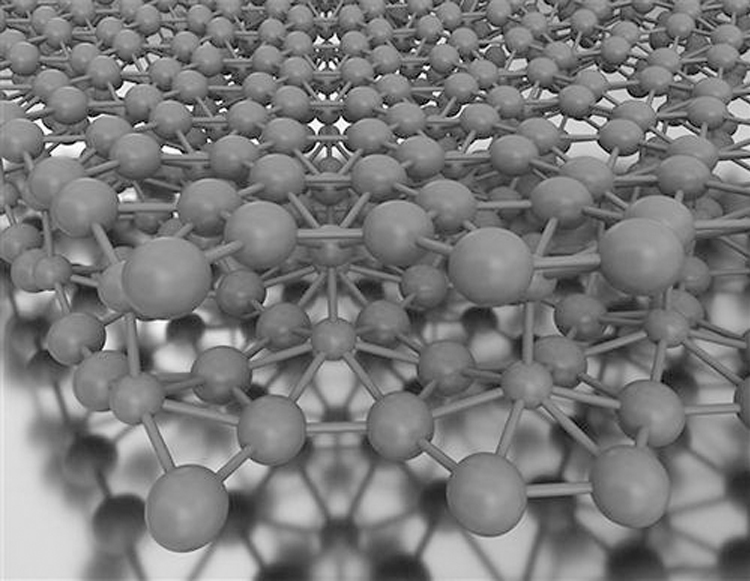Time:2021-08-31 Source:Journal of Chinese Science

Atomic structure of bilayer borene. Credit: Northwestern University
Engineers in the United States have for the first time created a borene bilayer structure with an atomic plane, a feat that challenges boron's natural tendency to form non-planar clusters of atoms beyond the limits of a single atomic layer. The study was published August 26 in Nature Materials.
Although known for its promising electronic properties, the synthesis of borene, a thin sheet of boron with a single atomic layer thickness, has proved challenging. Unlike its two-dimensional analogue, graphene, borene cannot be stripped from large chunks of boron and must be grown directly onto a substrate.
If growing a single layer is difficult, growing multiple layers of borene seems impossible. Because large chunks of boron are not layered like graphite, growing boron outside of a single atomic layer would form clusters rather than flat films.
"When you're trying to grow thicker layers of atoms, you can use the volume structure of boron." Mark Hersam, director of the Center for Materials Research Science and Engineering at Northwestern University and senior author of the paper, said, "Rather than maintaining an atomic plane, thicker boron films can form particles and atomic groups. The key, therefore, is to find growing conditions that prevent clusters from forming. This has been difficult to achieve. Now we provide a new platform into the uncharted territory between the single atomic layer and the subject."
Hersam led the work with Rice University professor Boris Yakobson. Hersam and collaborators first created borene, which is stronger, lighter and more flexible than graphene and has the potential to revolutionize batteries, electronics, sensors, solar cells and quantum computing, five years ago. Although theoretical studies predicted that bilayer borenes were possible, many researchers, including Hersam, were not convinced.
"Making a new material is challenging, even when theoretical studies predict its existence." "It's very difficult for theory to tell you the synthesis conditions needed to achieve this new structure," Hersam said.
Hersam's team found that the key to the synthesis conditions was the substrate used to grow the material. In this study, Hersam and colleagues grew borene on a flat silver substrate. When exposed to extremely high temperatures, silver aggregates between atomic steps, forming large, unusually flat steps.
"We grew borene on these large platforms and saw the formation of a second layer." "Based on this serendipitous discovery, we deliberately focused our efforts in this direction," Hersam said.
The bilayer material retains all the desired electronic properties of borene while offering new advantages. For example, the material consists of sheets two atomic layers thick with space between them and joined together to store energy or chemicals.
"Theoretical predictions suggest that bilayer borene is a promising battery material. Leaving space between the two layers can hold lithium ions." Hersam says his team hopes to continue to increase the thickness of the borene layer, or create double layers with different atomic geometries. (Jin Nan)
